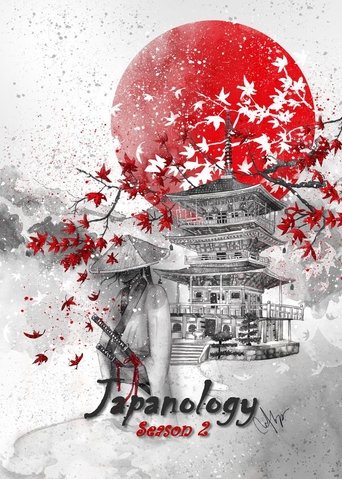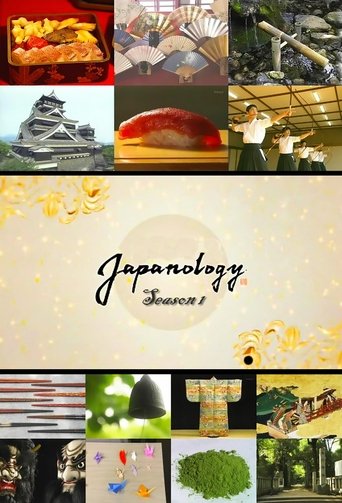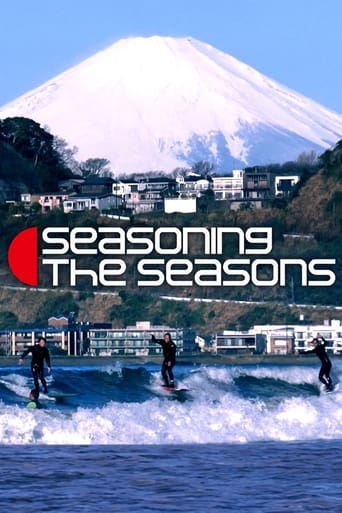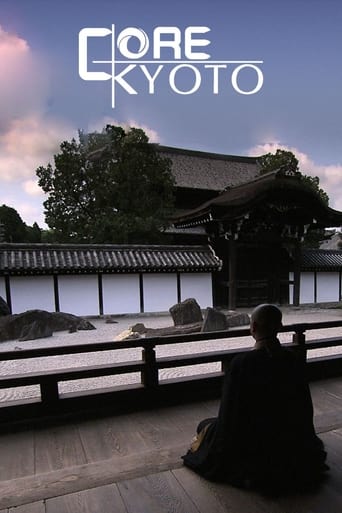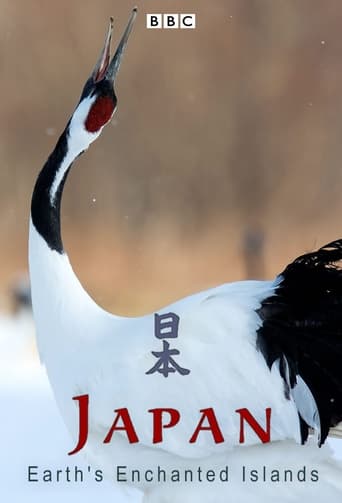

Japanology Plus Season 9
Host Peter Barakan delves into various aspects of Japanese culture; exploring practices, history, and modern innovations in such areas as ramen, rice, sushi, geisha, bonsai, and so much more. Local experts discuss their passions at fascinating length, and American Japanophile Matt Alt experiences the food, practices, and cultures in each episode in depth. Viewers will finish each half hour episode with a new understanding of an area of Japanese life through demonstrative videos and explanations, all delivered respectfully and true to the Japanese way of life.
Watch Trailer
Japanology Plus Season 9 Full Episode Guide
Hanawa-bayashi is the name both of a parade of floats in Kazuno, Akita Prefecture, and of the traditional music that is performed all night at the festival. These days, the performers include Colleen Schmuckal, a musician, composer and researcher from the USA. She plays the shamisen, a three-stringed instrument that was once a feature of everyday life in Japan. In a Japanophiles interview, Schmuckal tells Peter Barakan about the unique appeal of the shamisen and of Hanawa-bayashi music.
Around 500 years ago, sea traffic in the Seto Inland Sea was monitored and controlled by a group called the "Murakami Kaizoku." The word "kaizoku" translates to "pirates," but these seafarers weren't thieves; they actually helped to keep the area safe. In the second of two episodes about the Murakami Kaizoku, we go to the clan's island birthplace and visit a home that has many related historical artifacts. We also learn how the story of the Murakami Kaizoku is being told in fiction and drama.
Around 500 years ago, sea traffic in the Seto Inland Sea was monitored and controlled by a group called the "Murakami Kaizoku." The word "kaizoku" translates to "pirates," but these seafarers weren't thieves; they actually helped to keep the area safe. In the first of two episodes about the Murakami Kaizoku, museum curator Tanaka Ken tells us about their activities, and takes us to a former kaizoku stronghold. We learn about their incredible seamanship, and their cultural sensibilities.
Japan is one of the world's top consumers of cardboard. The cardboard beds used during the Tokyo 2020 Olympic and Paralympic Games captured global attention. That was just one example of the many innovative ways in which Japan has made use of this humble material. Our guest, university professor Saito Katsuhiko, introduces some new products, and comments on the cultural aspects of cardboard in Japanese life. In Plus One, Matt Alt learns how to make cardboard artwork from a master of the craft.
The moon has been cherished and admired throughout Japanese history. People have long held moon-viewing events, and expressed gratitude for the moon's role in successful harvests. Our expert guest, Miura Yasuko, speaks about moon-related traditions, and comments on why people in Japan feel such an affinity for the moon. We learn about developments in the space industry presently advancing in Japan. And in Plus One, Matt Alt visits a toy company that has created a miniature robot for exploring the lunar surface.
Andrew Dewar, originally from Toronto, Canada, is a designer of paper airplanes. His interest was sparked at the age of ten, when he encountered a sleek, unfamiliar paper-airplane design. Dewar contacted its creator: Ninomiya Yasuaki, a Japanese master of the craft. The encounter inspired a lifelong passion. In a Japanophiles interview, Dewar tells Peter Barakan about his innovative approach to paper-airplane design, and explains why Japan is the perfect place for fans of this activity.
Japan suffers from frequent water-related natural disasters, such as flooding, landslides and storm surges. Throughout history, methods to mitigate their effects have been devised. Our guest, university professor Kawaike Kenji, introduces a facility that recreates disaster conditions in order to study them. We hear why these events are so common in Japan, and explore some potential solutions. And in Plus One, Matt Alt tries out some innovative emergency supplies.
The average age of the Japanese population is rising quickly. To offer care that matches the diverse needs of Japan's many elderly people, Japan produces a wide range of welfare goods. Various ingenious products offer physical and emotional support to help people live independently. Our guest, physiotherapist Matsuba Takashi, introduces a number of devices, including wheelchairs and one-handed chopsticks. We also see how robots are used in modern welfare facilities.
Goldfish were introduced to Japan in the 16th century, and since then, they have become widely admired. Many people keep them as pets, and they are a common motif on everyday objects. Our guest, author and goldfish expert Kawada Yonosuke, introduces various unusual varieties, and explains the role that goldfish play in Japanese culture. Peter tries his hand at goldfish scooping, and we meet an artist presenting goldfish in an innovative new way.
Gregory Khezrnejat is an author and university associate professor from the United States. In 2021, his Japanese-language novel Kamogawa Runner won the second annual Kyoto Literature Award. The novel is inspired by Khezrnejat's early experiences in Japan. In a Japanophiles interview, he talks to Peter Barakan about the challenges involved in expressing yourself in a second language. He reads excerpts from the book, and talks about his work as an associate professor of literature at a Japanese university.
In Japan, frozen food is an essential part of many people's lives. Companies are constantly developing new techniques that make products tastier, longer lasting and more convenient. Our guest, consumer consultant Miura Yoshiko, explains why frozen food is so popular. She introduces some of the latest developments, such as flash freezing. And in Plus One, Matt Alt learns about new types of ice.
Okinawa Prefecture is a group of subtropical islands in the far south of Japan. It was previously a prosperous maritime trading state called the Ryukyu Kingdom. In the second of 2 episodes about Okinawa, we focus on the kingdom's political and cultural hub: Shuri Castle. Our guest, historian Takara Kurayoshi, talks about working on the castle's reconstruction, and shares how he felt in 2019, when a devastating fire burned it to the ground. He also tells us about the forthcoming reconstruction project.
Okinawa Prefecture is a group of subtropical islands in the far south of Japan. It was previously a prosperous maritime trading state called the Ryukyu Kingdom. In the first of 2 episodes about Okinawa, we discover how the Ryukyu Kingdom maintained an independent identity for 450 years. Our guest, historian Uezato Takashi, talks about the clever diplomatic strategies Ryukyu used with its larger neighbors, China and Japan. And we learn how that contributed to an eclectic and original outlook.
In Japan, vinyl records have made a comeback. Sales in 2021 were 10 times higher than they were in 2010. Japan's second-hand records are well-regarded all over the world because they're generally kept in great condition. Our guest, Honne Makoto, works for a record manufacturing company. He tells us about the history of vinyl in Japan, and its appeal in the modern era. We also see how world-class Japanese technology contributes to making vinyl records and the machines that play them.
40% of the motor vehicles in Japan are ultra-compact "kei" cars. These light vehicles are maneuverable, practical and cost-efficient. Tiny "kei" pickup trucks, known as "keitora," are especially common in rural Japan. They're perfect for narrow unpaved countryside roads. Our guest, motoring journalist Maruyama Makoto, shows us how "keitora" usage is diversifying in modern Japan. And in Plus One, Vinay Murthy makes a dry landscape garden on the back of a tiny truck.
Claudio Feliciani is a Swiss-Italian scientist whose main interest is the movement of crowds. He worked alongside 3 Japanese scientists on a study that examined why people bump into each other when some of them are looking at a smartphone. It won an Ig Nobel Prize, which honors research that first makes you laugh, then makes you think. In a Japanophiles interview, Feliciani tells Peter Barakan how he ended up in Japan, and why he finds crowds so fascinating.
The "Showa era" was the period of Japanese history between 1926 and 1989. The 60s, 70s and 80s are fondly remembered in Japan as a time when many were feeling the positive effects of a booming economy. That nostalgia has been growing in recent years, even among those who didn't experience the Showa era first-hand. Our guest, Professor Kono Kohei of Ibaraki University, introduces the bold designs and physical appeal of Showa era products, and explains why cafes from those days are attracting young customers.
For hundreds of years, Japanese have used name stamps, known as Hanko, to prove their identity. People use stamps in everyday situations, such as receiving a parcel, and in formal contexts, such as business transactions. Our guest, Hanko carver Kobayashi Shigehito, shows us how a Hanko is made by hand. We also learn how the move towards remote working, triggered by the COVID-19 pandemic, is affecting how Hanko are used.
Japanese paper, known as washi, is attractively textured and extremely durable. For centuries, it has been used in many aspects of Japanese life and culture. Our guest, Akutsu Tomohiro, talks about his work repairing and reinforcing old documents using washi. He introduces various techniques used in Japanese paper making, and shows us some surprising new products. We also meet modern artists and craftspeople who are exploring new possibilities for washi.
Since the outbreak of COVID-19, people all over the world have become accustomed to wearing masks. But in Japan, a custom of mask-wearing dates back hundreds of years. Today, innovations are addressing the communication problems that masks can cause. Our guest, science historian Sumida Tomohisa, offers his views on why Japanese feel so at ease wearing masks. And in Plus One, Lemi Duncan looks at ways to make masks more fashionable.
Steve Tallon is a cycling enthusiast from the UK. In 2005, he spent 8 months cycling from the UK to Japan. It was a 16,000-kilometer journey through Europe, the Middle East, central Asia and China. In a Japanophiles interview, Tallon tells Peter Barakan what inspired him to undertake this trip. He talks about the adventures he experienced along the way, and the appeal of cycling. Tallon, now a 30-year resident of Japan, also takes us to one of his favorite local destinations.
The Jomon period lasted from around 13,000 BC to 300 BC. This society of hunter-gatherers cherished peace, cooperation and a deep connection to the natural world. In the second of 2 episodes about the Jomon period, we look at clay figurines called Dogu. They feature dramatic poses, exaggerated features and cord-marked patterns. Museum curator Kokubo Takuya talks about research into Dogu, and the information it has revealed about their purpose and their importance.
The Jomon period lasted from around 13,000 BC to 300 BC. This society of hunter-gatherers cherished peace, cooperation and a deep connection to the natural world. In the first of 2 episodes about the Jomon period, we look at the Sannai Maruyama Site. 6,000 years ago, a large settlement was established here. Okada Yasuhiro shows us around recreated buildings, and introduces various artifacts. He explains what they tell us about the Jomon people, and their outlook on life.
Traditional Japanese homes, featuring earthen walls, wooden beams and thatched roofs, have been used for centuries. Built using local materials, they incorporated clever techniques to keep the interior warm in winter and cool in summer. Our guest, architect Maruya Hiroo, introduces several traditional houses, and explains what life was like for the people who called them home. And in Plus One, Matt Alt sees how the restoration and continued use of old houses is helping to revitalize a small town.
VTubers create online content using a computer-generated avatar. Motion capture technology enables them to record their gestures and expressions, and then apply those movements to the animated avatar. The concept emerged in the mid 2010s, and then experienced a rapid increase in popularity. Our guest, Professor Inami Masahiko, explains the appeal of interacting online using an avatar, and talks about the technology's potential. We also see how VTubing is being used to promote regional revitalization.
Kotatsu are low tables with a heat source underneath, and a blanket draped over the top. For hundreds of years, Japanese have gathered around them in the cold winter months. They're cozy and comfortable; perfect for watching TV, studying and chatting to family and friends. Our guest, architect and university professor Watanabe Shinichi, talks about the social and environmental benefits of Kotatsu. And in Plus One, Kanoa tries out Kotatsu in some unusual locations.
In a Japanophiles interview, Peter Barakan meets Tom Hovasse, a basketball coach from the USA. After spending much of his playing career in Japan, Hovasse began coaching Japanese teams. In 2017 he was appointed head coach of the Japan women's national basketball team, and under his leadership they won a silver medal at the Tokyo Olympics. Following that success, he was recently appointed to a new role: head coach of the men's team. Hovasse talks about his journey, and his coaching philosophy.
Seasons































